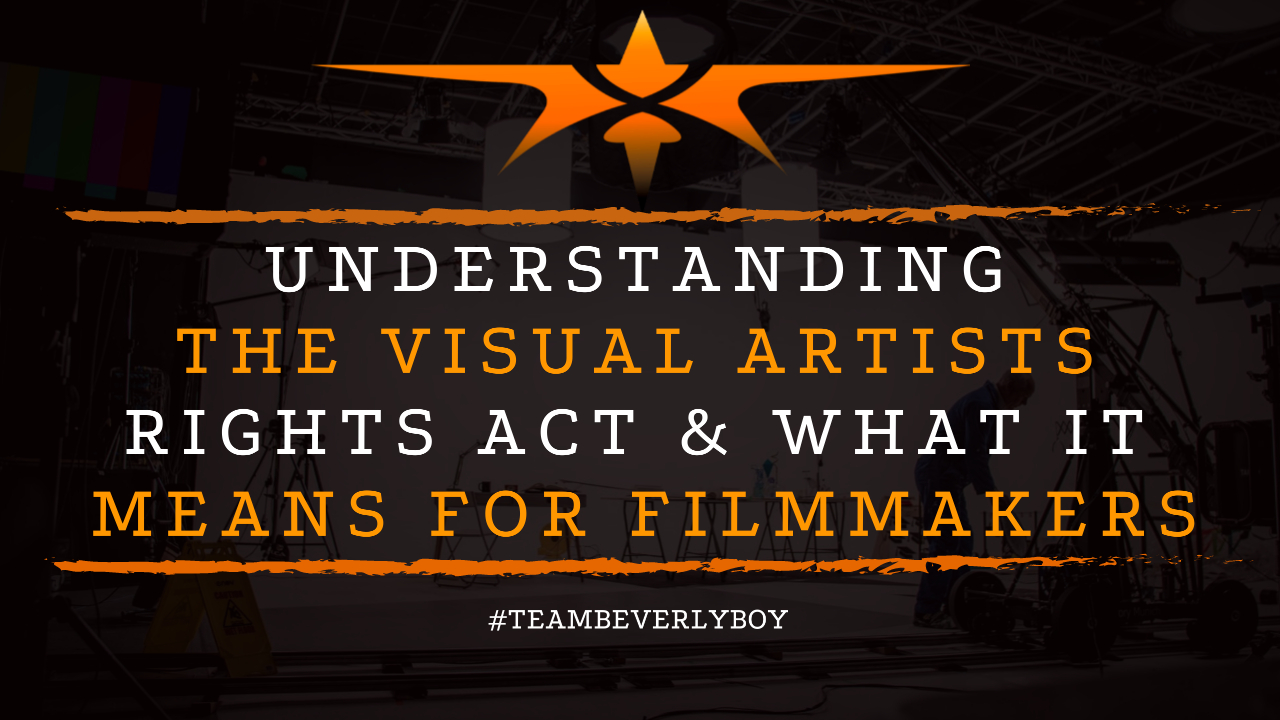
Understanding the Visual Artists Rights Act & What it Means for Filmmakers
In the world of Film, motion picture, and multimedia works, the use of various types of paintings, photographs, sculptures, and other items that could potentially be copyrighted visual works that are being used as props or set decorations is commonplace. But according to particular copyright law, it could also be copyright infringement. In fact, such use could be considered a potential violation of copyright law and may not fall under the safety limits of “fair use” in which special protections are otherwise afforded. Thus, filmmakers, producers of television, video and motion picture works, should certainly familiarize themselves with the Visual Artists Rights Act of 1990 and what it means for them.

What is the Visual Artists Rights Act?
The Visual Artists Rights Act represents a key area of legislation. In which special rights are provided called “moral rights” to copyrighted works even after they are sold.
Prior to the Visual Rights Act artists in the United States really had very little power if any. To protect their works from mutilation, misattribution or destruction.
The Visual Artists Rights Act (VARA) protects the moral rights or attribution and integrity. Providing artists with specific rights. Even to their works that are sold to others.
Thus, property ownership, under copyright law, does not convey absolute rights to the art. As moral rights legislation recognizes that ownership of the art does not constitute absolute property rights.
Under the Visual Artists Rights Act, moral rights include the following:
- Disclosure and divulgation. These two terms essentially allow artists to determine when their work is complete and when it may be displayed.
- Paternity or attribution. These terms allow the artist to protect the identification of their name with their work. As well as to disclaim it when applied to another.
- Right of withdrawal. Which means that the artist can modify or withdraw the work following publication.
- Integrity which means that the artist has the right to prevent their work from being displayed. In a way that alters, distorts, or mutilates the original form.
Attribution and Integrity
The Visual Artists Rights Act recognizes attribution and integrity of an author’s work. To prevent attachment of another artists name to work. Which was not created by that artist.
And also when the work has been distorted, mutilated, or modified. But what does this mean for filmmakers?
VARA for Filmmakers
The Visual Artists Rights Act provides copyrighted artworks with special protections against the violation of unauthorized use of art.
But it expressly excludes from its scope those works which may be altered, mutilated, or falsely attributed in motion pictures, computer programs or audiovisual works.
In fact, moral rights laws in the U.S. and in other countries including many European countries provide some exemption from motion picture works while not uniformly exempting Audiovisual Works as a whole.
The Takeaway
As such, it’s important for filmmakers to know the relevant laws in foreign jurisdictions to ensure that they have followed appropriate law for the area in which they will be releasing their film.
This is particularly important when the work is in use without permission. And will be released in the home country of the artist.



